Benefits and Pensions Monitor publishes RiskFirst article: Pension Risk Management – Technology keeps all eyes on “ultimate goal”
By Matthew Seymour, CEO, RiskFirst
Evolving regulations, changing accounting procedures, greater pensioner freedoms and a growing spectrum of alternative investments: the pensions landscape is more complex than ever before. And yet, market volatility necessitates faster responses from pension plans as they adapt their investment strategies and take risk off the table.
To do this effectively, and ultimately meet their obligations when due, pension plans – as well as, of course, their consultants and investment managers – need a clear understanding of the risk they run and its potential implications. They then need to be able to manage this risk in a sophisticated manner.
Step forward robust, flexible, on-demand technology tools; to provide a holistic, cross-balance sheet understanding of risk in order to structure portfolios and implement effective de-risking solutions. For technological innovation to be a true success, however, it must be designed with the “ultimate goal” in mind: the asset owner’s objective, whether that’s to meet liabilities and/or to drive returns.
Beyond one size fits all
We are well beyond one-size-fits-all solutions for pension plans. Agile technology platforms allow liability analytics to be populated with member-level data, plan cashflows, or even higher-level information depending on available data and purpose. Similarly, asset data can be modelled at security level or, alternatively, mapped to a combination of standard and custom benchmarks.
This data can then be stress-tested and interrogated with powerful analytics, driving comprehensive insights of risk. Such capabilities place pioneering technology at the very heart of effective, efficient plan management.
Pension plans and asset managers can, for example, analyze cross-balance sheet risk using tools such as VaR and ‘what if’ stress-testing. Furthermore, optimization analysis can enable managers to design solutions that maximize the likelihood that the assets ultimately meet the asset owner’s liabilities.
The benefits of technology do not stop there. For plans seeking to transfer risk, being able to regularly monitor a plan’s funded status to undertake effective dynamic asset allocation or glide path strategies is a key priority. And the need for daily monitoring so as to not miss intra-month opportunities is becoming increasingly evident, especially given rate volatility.
Real-time information is allowing plans not only gain valuable insights into, and understanding of, their funding position and sensitivity to market and demographic factors, it is also allowing them to react far more quickly to market conditions or changes in funded status – with reaction times transformed from weeks or even months, to just days.
Potential opportunities
Furthermore, monitoring on a far more frequent basis can result in an increase in the number of potential opportunities to act and ensure timing can be optimized and risk best-managed. Risk management platforms enable plans to recognize when particular triggers have been breached, and then undertake timely asset allocation analysis. This could mean, for instance, selling assets from the return-seeking portfolio and buying assets in the liability-hedging portfolio – locking in funding enhancements by leveraging opportunities to reduce risk at an optimized time.
Traditionally, pension plans have received asset, liability and risk information from multiple disparate sources. No longer. Today, technology platforms can provide cross-balance sheet, consolidated and consistent plan-specific information in one place across multiple jurisdictions.
The upshot is transformed operating models and new, collaborative approaches between stakeholders. Such platforms act as a single hub through which all parties can see consistent information that is relevant to them, driving more meaningful and interactive relationships between pension plan stakeholders, including trustees, sponsors, actuaries, consultants, investment managers and insurers.
This allows parties to be fully informed and aligned in their dialogue with clients, and a more holistic offering to be presented – something that can help to generate improved coordination and efficiency across the end-to-end process and result in a step-change in advisory services. For example, actuarial consulting firms could use such a platform to facilitate discussions with their investment advisor partners.
Or they could be used as a tool in the assessment of bulk annuity buy-outs for consulting firms to collaborate with insurers; thus increasing efficiency in the production of indicative buy-in or buyout pricing for pension plans. By providing insurers with access to clients’ plan information, they can input their own assumptions and run valuations to produce a quotation. This reduces the need for insurers to undertake their own plan modelling prior to the provision of indicative pricing – saving time and resources for all involved.
Clear benefits
In addition to delivering clear benefits to clients, this approach is also beneficial for the insurer, which receives the plan benefits information in a format that removes the need for them to code up the plan and perform their own valuation exercise. The approach also reduces the insurer’s need to perform the same amount of expensive due diligence or ask numerous questions of the consultancy.
Technology has evolved to transform pension risk management and enable far more effective and efficient processes. And such software as a service (SaaS) platforms are equipped to adapt, grow and develop in line with market changes and shifting client demands.
Undoubtedly, today’s assets and liabilities are changing in more complex ways and being impacted by more factors, making effective risk management far more challenging – and far more crucial. But with the right technology tools, advisors and asset managers can be equipped to help plans identify and understand their needs, make optimized decisions on how risk can be best managed, and capture opportunities to maximize their investment strategies.
This article was first published by Benefits and Pensions Monitor




